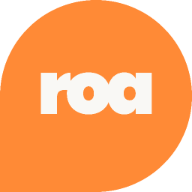This article comes from Jeff Offerdahl’s insightful talk at our Austin 2024 Revenue Operations Summit. Check out his full presentation and our wealth of OnDemand resources.
Does your company’s tech stack feel like a web of overlapping tools and tangled processes? You’re not alone. Managing a revenue operations (RevOps) tech stack can be daunting, but when done right, it shifts from a source of frustration to a powerful driver of growth.
Hi, I’m Jeff Offerdahl, Senior Director of Revenue Operations at FLASH. Over the years, I’ve had the privilege of working across several dynamic industries, from security software to healthcare, and now tech. Along the way, I’ve learned a thing or two about the vital role RevOps plays in company growth.
So today, I’ll share how you can optimize your tech stack to align seamlessly with your revenue funnel and support long-term growth.
Let’s dive in.
The tech stack conundrum
If your tech stack feels overwhelming, you’re not alone. Most companies today have more tools than they have employees. For example, at a previous company of about 100 people, we were managing over 120 SaaS applications!
It’s easy to see how this happens. Teams adopt new tools to solve immediate problems, but without a cohesive strategy, redundancies emerge, costs escalate, and ownership becomes murky.
It’s a headache, but here’s the good news: with a structured approach, we can transform the chaos into a tech stack that’s a true enabler of growth.

Mapping the revenue funnel
The key to taming your tech stack lies in mapping it to your revenue funnel. Notice I said revenue funnel, not sales funnel. A revenue funnel goes beyond sales to include marketing, customer success, and customer support—the full journey from prospect to renewal and upsell.
Here’s a high-level breakdown of the funnel and the tools that fit each stage:
1. Prospects
The revenue journey begins with data. You can’t target your ideal customer profile without it. Tools like ZoomInfo or Demandbase can help build and enrich your prospect database.
For niche industries, vertical-specific tools can provide even more precise data. Remember, this data isn’t static. Enrichment tools keep it fresh and accurate—essential when 67% of people change jobs every two years.


 6 min read
6 min read
 Follow us on LinkedIn
Follow us on LinkedIn




